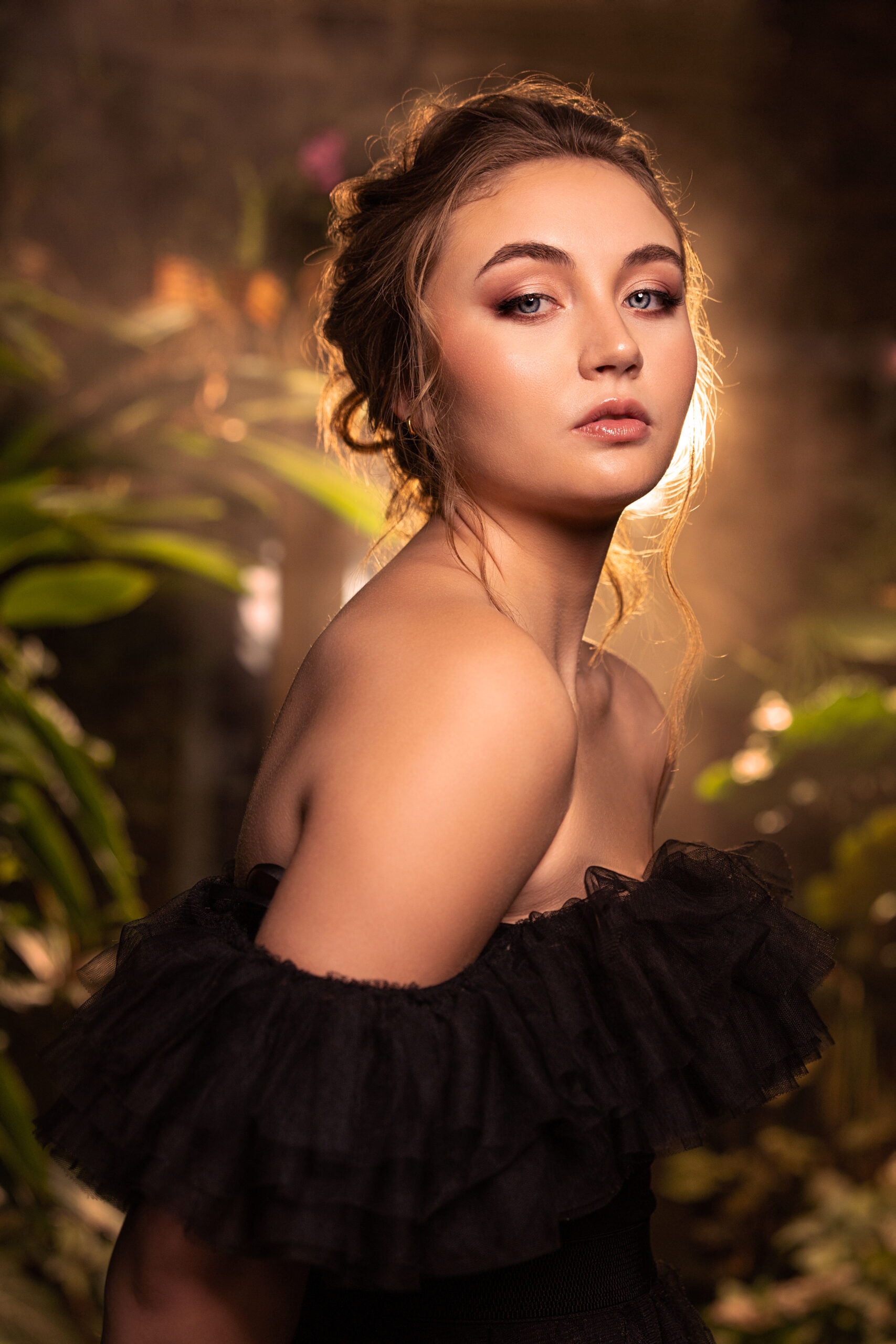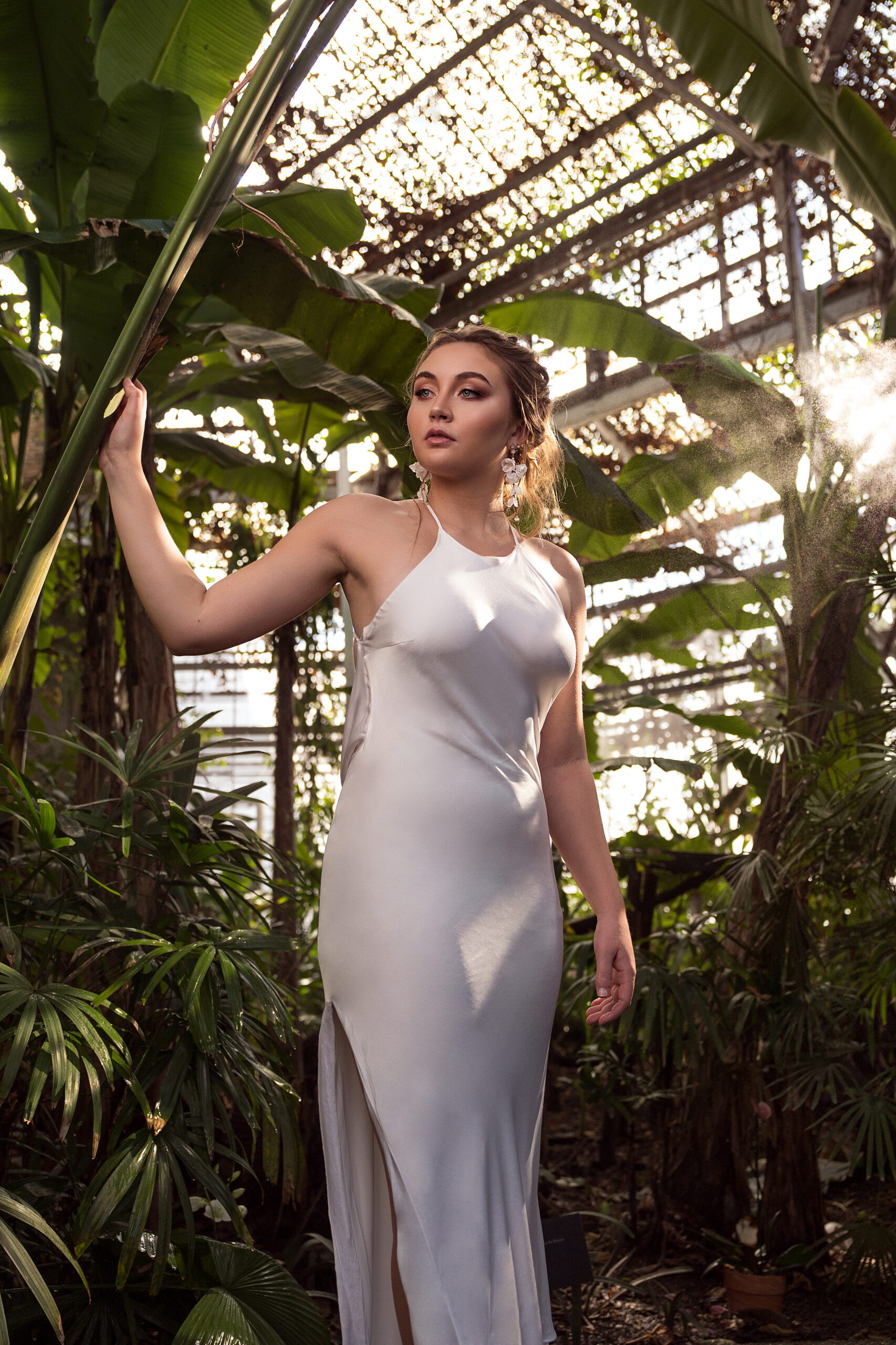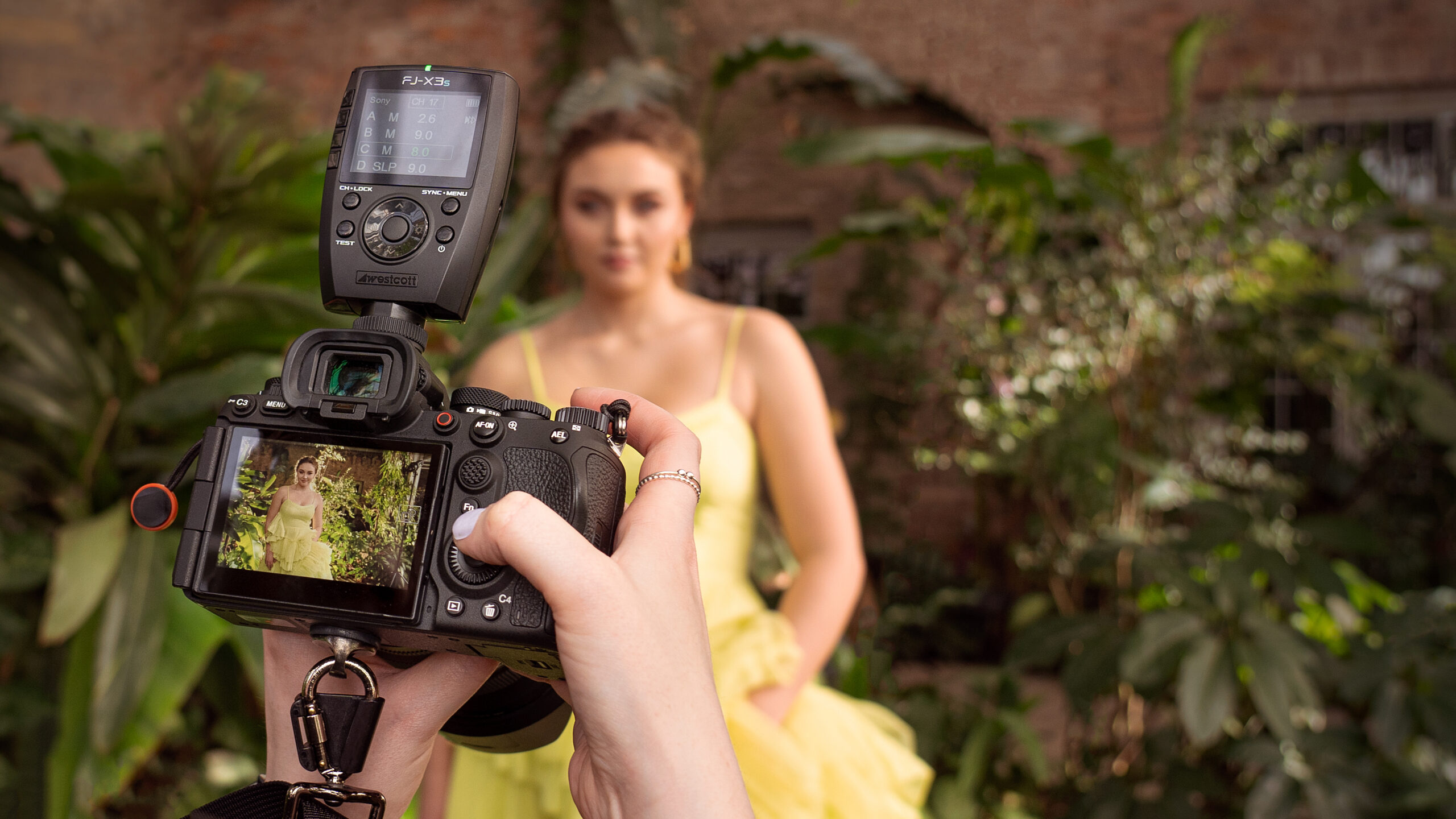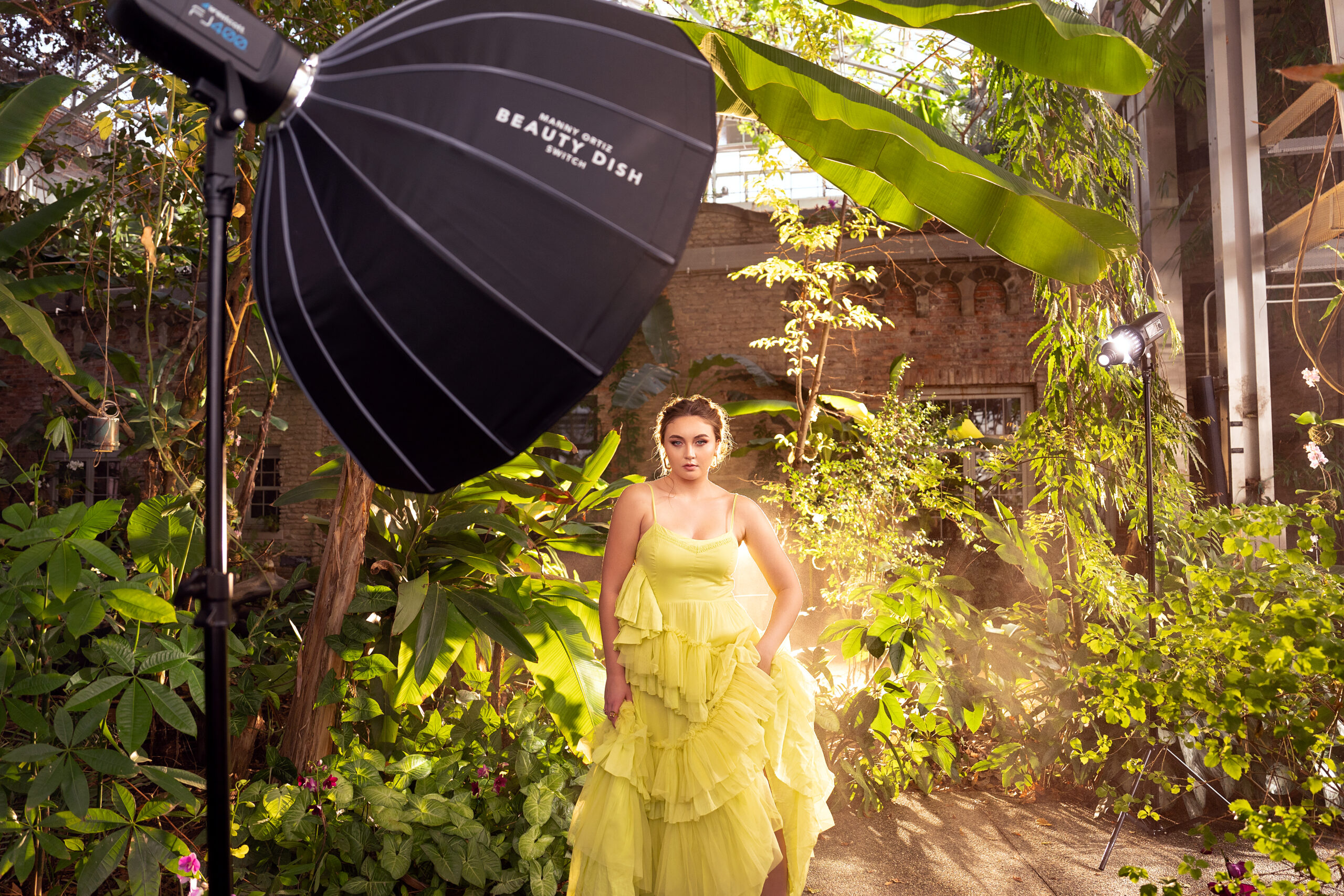In this video, beauty portrait photographer, Ashley Boring goes hands-on with the Sony a9iii and the FJ Wireless Flash System to show how to maximize your flash with a global shutter camera.
Ashley begins by explaining the groundbreaking features of the Sony a9 III– including the first global shutter in a full-frame camera. Before discussing the lighting setups, Ashley dives deeper into exploring this feature for flash photography.
While a typical mechanical shutter, which is common in most cameras, captures images line by line, the global shutter reads every pixel simultaneously. This unique feature offers several advantages, including the ability to shoot at incredibly fast shutter speeds – up to 1/80000th of a second, which is 10 times faster than most other cameras at this point. Additionally, the global shutter allows shooting up to 120 frames per second and eliminates the notorious rolling shutter “Jello” effect for fast-moving subjects.
These features particularly benefit photographers capturing fast-moving subjects. As a beauty portrait photographer, Ashley notices the one feature that interests her about this camera – its capability to sync with strobes at any speed, eliminating the constraints of a sync speed when working with strobes like the Westcott FJ400. This opens up possibilities for capturing unique and stunning images with strobes, making the Sony a9 IIIa game-changer in the world of flash photography.
Most cameras today with a mechanical shutter have a sync speed of around 1/250th of a second. Thanks to the global shutter of the Alpha 9 III, flashes can sync to its max shutter speed of 1/80000th of a second.
When using strobes and a camera with a mechanical shutter, High-Speed Sync is a workaround for photographers who want to shoot at a shutter speed that’s higher than their sync speed. But, this comes with a downside. High-speed sync works by having your strobe send out smaller bursts of light throughout your exposure, almost making it like a constant light during the exposure time. Since your strobe must work harder to produce small fast bursts throughout the exposure, you lose a lot of flash power and drain your battery faster, especially at higher shutter speeds. Sometimes this output loss can be significant. With a global shutter, you can shoot at faster shutter speeds without needing high-speed sync, allowing you to get the most of your flash’s output.
One important thing to keep in mind when working with flash photography and global shutter is the flash duration of your strobe. With the faster shutter speeds of the Sony Alpha 9 III, it’s important to have a strobe with a fast flash duration. When it comes to measuring flash duration there are two common ways it’s measured, T1 and T5. For this video, Ashley focuses on T1. In the context of flash photography, T1 refers to the flash duration, specifically the time it takes for the flash to reach its peak intensity and then decrease to 10% of that intensity. With the Westcott FJ400 that Ashley is using today, its max T1 speed is 1/3000th in normal mode.
So, what happens when your shutter speed is faster than your flash can even fire? With the Alpha 9 III, there is a solution. You adjust your flash timing setting to better sync with the peak of the flash output to get the most of your flash exposure. Since the FJ400’s T1 speed is 1/3000th of a second you do not need to adjust this setting until after you exceed the flash duration, but the more you go past this speed the more important it is to adjust this setting. If you’re shooting at the end of Sony’s Alpha 9 III shutter speeds you might miss the flash entirely if you don’t set this setting. When adjusting your flash timing setting it’s important to note that the peak of the light can be different depending on what flash you’re using and what power setting it’s on. So, this is going to be something you should play with and get used to before your shoot. To learn more about the Flash Timing Setting, Reference the Westcott FAQ page where you can download a field guide. This can help you know what flash timing setting to choose based on your desired power output and shutter speed.
Now that you know the benefits of a global shutter, Ashley dives into how she got her shots and how the global shutter affected them.
One of her goals for this shoot was to show the capabilities of the a9iii. She needed a space with a lot of ambient light. Here in Ohio, sunlight and good weather do not easily come by in winter, but luckily it is a sunny day for this shoot and our friends at the Toledo Zoo are allowing us to use their beautiful two-story greenhouse for the shoot.
For the first shot, Ashley wants to push the capabilities of Sony’s global shutter and shoot at a faster shutter speed, than what’s possible with a mechanical shutter. With faster shutter speeds she knows that she will be eliminating a lot of the ambient light in the space, so with that in mind she wants to go for a darker dramatic portrait. For lighting, Ashley is using Wescott’s FJ400s, with my main light being modified with a 24” Rapid Box Beauty Dish Switch, with a silver interior. She wants to use a smaller modifier to keep the light focused on the model and achieve dramatically harder light compared to a large modifier. She adds in a second FJ400 with a bare bulb and a light orange Flexigel. Since she is shooting at 1/20000th of a second and cutting out a lot of ambient light, this gives her the unique opportunity to control the whole scene. She wants to use this light without a modifier so she can get a large spread of light.
While shooting this look, the greenhouse water misters turned on behind the model. Ashley quickly takes advantage of these to add some atmosphere to the scene. She changes her camera angle so that the FJ400 she’s using as an edge light is directly behind her subject. This backlights the subject, but more importantly, it backlights the fine mist in the air, creating a glow to the scene. Since she changed her camera angle, her main light also becomes a bit more front-facing to her subject, giving her more even lighting on her subject’s face.
For the final shot in this location, Ashley wants to do a day-to-night look. Again, since she is using a fast shutter speed of 1/20000th of a second, she has full control over the ambiance which is perfect for day-to-night looks. She simply adds another light orange Flexigel to her main light, and white balances the camera to tungsten to match the gel color of her lighting. By adding the light orange gel to her flashes, and white balancing the camera to tungsten, anything lit by daylight turns to a blue shade. This gives the look of it being nighttime, while still working in daylight.
For the next look, Ashley goes to the first floor of the greenhouse and is aiming for a bright airy look. The first thing she does for this shot is lower her shutter speed. Since she wants a bright airy look, she knows that she is going to let in some more ambient light. Ashley also swaps out the 24” beauty dish for a 36” Rapid Box Beauty Dish Switch with a silver interior. This gives her a softer light on the subject while also giving her more coverage for wider shots. Finally, to simulate sunlight she adds the Optical Spot by Lindsay Adler to the scene. She uses the 50mm lens on the optical spot to help spread the light out. She also adds a half CTO gel to warm up the light to look like a setting sun. She uses a Maple Leaves Gobo to add a creative touch. Since she is shooting in a greenhouse, Ashley wants the simulated sunlight to be broken up, almost like how it would look with sunlight coming through leaves and branches. Finally, we spray some mist into the air so that the light rays pick up the mist and add to the atmosphere.
For her last look at the shoot, Ashley wants to do a similar lighting setup as the previous shot, but with one big change. She uses the same modifiers as the last shot but adds in a third light. She wants to use this light to backlight her subject, and some of the plants surrounding her, so she places this backlight on the path directly behind the subject. Just like before, she uses this light bare bulb since she wants the light to spread everywhere. She also adds the same light orange Flexigel that she used in my first look to add a warm glow that complements the color of the dress the model is wearing.
As you can see, the Sony Alpha 9 III isn’t just for photographers who shoot fast-moving subjects. As a portrait photographer, Ashley can utilize a global shutter to maximize the flash’s output at faster shutter speeds with more control over bright ambient light.




Learn how Ashley uses the FJ400’s front and rear curtain sync functions to create light trails here.
Lighting Gear in Action

Original FJ400 Strobe with AC/DC Battery (400Ws)4700

Original FJ400 Strobe with AC/DC Battery (400Ws)4700






You must be logged in to post a comment.